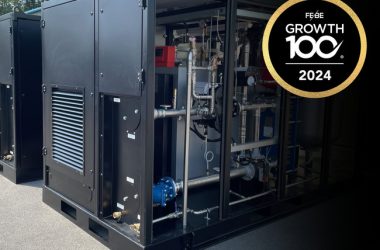Last Updated on: 26th April 2024, 04:06 pm
In the realm of warehouse logistics, the forklift stands as a stalwart companion, streamlining operations and facilitating the movement of goods. However, with a plethora of forklift types available, each tailored to specific tasks and environments, selecting the optimal one for your warehouse can be a daunting task. This guide aims to dissect the diverse array of forklifts, shedding light on their unique features and applications to empower you in making an informed choice for your warehouse needs.
Counterbalance Forklifts
Counterbalance forklifts reign supreme as the quintessential workhorse in warehouses worldwide. Characterised by their weighty rear-end counterbalance, these forklifts excel in indoor settings, effortlessly manoeuvring through aisles while loading and unloading pallets with ease. Their versatility makes them ideal for various warehouse layouts, but their reach is limited compared to specialised counterparts, rendering them less effective for outdoor tasks without modifications. Considering forklift truck lease options can be advantageous for warehouses aiming to optimise their operations while managing upfront costs effectively.
Reach Trucks
For warehouses with narrow aisle configurations and a penchant for vertical storage, reach trucks emerge as indispensable assets. Sporting extending forks capable of delving deep into racks, these nimble machines thrive in high-density storage environments. Their hallmark lies in their exceptional manoeuvrability within confined spaces and their ability to stack pallets vertically, optimising storage capacity. However, their usage is predominantly confined to indoor settings and may necessitate specialised training for operation.
Order Pickers
When precision and efficiency in order fulfilment are paramount, order pickers step into the spotlight. Featuring platforms for operators to stand on, these forklifts facilitate the picking of individual items from shelves with unparalleled dexterity. They are instrumental in streamlining order fulfilment processes and enhancing inventory management. However, their operational domain is limited to indoor environments, and additional safety precautions must be observed due to operators standing on platforms.
Pallet Jacks
For warehouses with modest operational demands and a focus on ground-level logistics, pallet jacks emerge as economical workhorses. Available in manual or electric variants, these trucks excel in moving palletised goods over short distances with minimal effort. They are ideal for low-intensity operations and small warehouses where the need for vertical stacking is minimal. However, their utility is constrained to ground-level tasks, lacking the capability for lifting loads to heights or manoeuvring in tight spaces.
Choosing the Best Forklift for Your Warehouse
In the quest for the perfect forklift, several crucial considerations must be weighed. Firstly, an assessment of the warehouse layout, including dimensions, aisle width and vertical storage capacity, is imperative to ensure compatibility. Secondly, the workload and usage patterns must be scrutinised to determine the frequency and intensity of forklift operations. Environmental factors, such as indoor/outdoor operation and exposure to hazardous materials, should also inform the decision-making process.
Moreover, the importance of operator training cannot be overstated, as proficient operation is essential for maximising safety and efficiency. Finally, budgetary constraints must be taken into account, balancing the initial cost of acquisition with long-term maintenance and operational expenses. By meticulously evaluating these factors and aligning them with the characteristics of each forklift type, warehouse managers can make informed decisions that optimise efficiency, productivity and safety within their facilities.
Conclusion
In the dynamic landscape of warehouse management, the forklift stands as an indispensable ally, catalysing operations and enhancing productivity. By comprehensively exploring the diverse spectrum of forklift types and dissecting their respective strengths and limitations, warehouse managers can navigate the maze of options with confidence. Armed with a nuanced understanding of their warehouse’s unique requirements and the capabilities of each forklift type, they can make astute decisions that propel their operations to new heights of efficiency and effectiveness.









